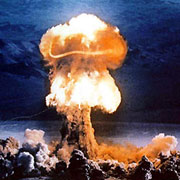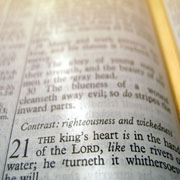
| Back To Meditation Home Page |

Custom Search
|
Are we Living in the Last Days...End Times? See Breaking News |
 |
| __________________________ |
 |
_________________________ |
| __________________________ |
As You Study the Biblical Last Days in the News... Discover the Bible As Well |
 |
| __________________________ |
 |
| __________________________ |
 |
| __________________________ |
To Know God's Word Read Scripture |
 |
_________________________ |
To Read God's Word Your Reading Schedule |
 |
_________________________ |
 |
| __________________________ |
Thought Provoking Articles for Your Meditation |
 |
_________________________ |
The Pomegranate of Scripture |
|---|
 |
Of the five species of plants mentioned in Deuteronomy 8:8, the pomegranate is certainly the most attractive. For this reason, the shrub is planted in many parts of the world as an ornamental. In the southwestern United States rows of pomegranates were planted, along irrigation laterals, as wind breaks at the edge of fields. With many stems arising from the base, the pomegranate grows to a height of about ten feet and has small, dark green leaves. The flowers, produced in the spring of the year, are strikingly beautiful with a bright red-orange color and a delicate bell shape. The fruits begin to mature in the first half of August. The fruits are large, up to six inches across. The tough, leathery rind is crimson or a similar shade of red. There are many varieties of pomegranate. Some are sweet and eaten as a dessert. Others are very tart and are used either as a substitute for lemon in cooking or to make a refreshing drink. Each fruit contains hundreds of hard, small seeds. Unlike most seeds, which have a seed coat which is hard and durable, the outer seed coat of the pomegranate is fleshy and is the source of the juice which makes the fruit desirable. For Jews, pomegranates have never gone out of style. We know that Jews have been eating pomegranate from the time that they were slaves in Egypt, because during one of those rough patches that happened while they were wandering in the desert for 40 years, they complained to Moses saying, "Why did you bring us up from Egypt to this evil place? This place has no seeds, or figs or grapes or pomegranates...." Later, when God was enticing the Jews to enter Israel, God promised them a land fecund with "wheat, barley, grapes, figs and pomegranates..." which no doubt appeased the Children of Israel somewhat, seeing as they were hankering for that fruit. Pomegranates figure prominently in the Bible in a couple of places. The garment of the high priest is one place where pomegranates were festooned. Bells and pomegranates alternate on the skirt of the high priest.
|
 |
Engraved pomegranates decorated the pillars in the First Temple, built by King Solomon. The name of the one pillar was Jachin (He will establish), and the other Boaz (in Him is strength). There were two hundred pomegranates engraved on the capitals of the two pillars, which were at the front of the temple. When taken into captivity, the pomegranates on the pillars are specifically mentioned.
In fact, a thimble-sized, ivory pomegranate bearing an ancient Hebrew inscription is the only relic ever recovered from the Solomon's Temple. |
 |
|
 |
| Pomegranate Border for top of Capitols |
Curiously, the first King of Israel, Saul spent some time under a pomegranate tree.
Saul under the pomegranate bush at Gibeah must have been a curious sight. He was a very tall man, "head and shoulders" above other men, yet was holding court under a big bush. Rather than a conspicuous tree, like the palm of Deborah, he chooses one of the shortest of trees. There are several references in the Song of Solomon to pomegranates, which is not surprising considering the symmetry and beauty of the fruit. In The image of the beautiful flowers and fruits are alluded to in the following references: (Song of Solomon 4:3, 6:7, 4:13, 6:11, 7:12). As with the other trees of the Holy Land, failure of the pomegranate crop is a manifest sign of God's judgment.
This fact is of special note, as the pomegranate requires considerably less care than most of the other Bible fruits. It is also one of the oldest fruits known to man. Some people argue that the fruit of the Tree of Knowledge plucked by Eve was not an apple at all but a pomegranate, and Greek myth attributes the cycle of the seasons to the goddess Persephone's weakness for pomegranates. The fruit also figures heavily in ancient Egyptian art and to this day plays an important role in the celebration of Rosh Hashanah, the Jewish New Year. Each pomegranate is said to contain 613 seeds, the very same number of commandments in the Law or Torah. Is it coincidence that the number of seeds in the pomegranate is the same as the number of commandments in the law? Is there significance that the pomegranate is seen on the priestly garments and on the pillars of the temple in ancient Israel? Was there more going on, other than a comical sight, in seeing King Saul under a pomegranate tree? To what does the metaphor of the pomegranate in the Song of Solomon refer? Was the fruit on the Tree of Life a pomegranate? These certainly are some things to meditate on. |
Be blessed and meditate or meditate and be blessed!!!!. The choice is yours!! |